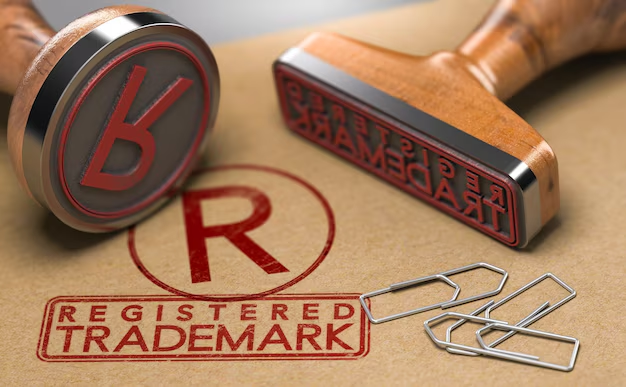How to Build an eCommerce Store for Electronics from Scratch!

The electronics eCommerce industry was estimated to be worth 244 billion USD in 2023.
This market size is expected to grow over 397 billion USD by 2029. These large figures are proof of how the online electronics sector is growing worldwide.
This shift in market behavior, from buying products offline to ordering them online, presents a wonderful opportunity. Thus, launching an eCommerce store for electronics now can be highly beneficial and profitable.
However, building an eCommerce store from scratch requires careful research and planning to ensure its success. In this article, we will take you through a detailed step-by-step process of building an eCommerce electronics store and help you face the challenges easily.
As you read further, you will find the best practices and steps for building a successful store. Let’s start.
How to Build an Electronics eCommerce Store? — A Step-by-step Guide!
Starting an electronics eCommerce store needs your time, money, and effort. Moreover, it requires thorough preparation in various aspects for a successful business.
We have prepared a guide to help you build an eCommerce store from scratch, from choosing your business niche to marketing your store. With the following steps, you’ll be able to develop a successful electronics eCommerce store:
Step #1 — Decide Your Business Niche

The first step to developing your electronics eCommerce store is choosing the niche. This will help you narrow down the products and services from the wide variety available.
It is best to choose a niche you have expertise and interest in, as better knowledge of the products will enable you to provide better customer service.
Here is an idea of the sub-niches within the electronics niche that you can choose from:
| Sub-Categories Under Electronics Niche | |
| Mobile Phones | keypad and touchscreen phones |
| Laptops And Computers | Chromebooks and workstations |
| Audio Equipment | headphones, speakers, home theater systems, and soundbars |
| Gaming Electronics | gaming consoles, controllers, gaming PCs, and VR headsets |
| Smart Home Devices | security cameras, thermostats, lighting systems, and smart speakers |
| Mobile Tech Accessories | cases, wireless charges, portable batteries, keyboard, mouse, and various other accessories associated with phones and tablets |
| Computer Hardware Components | storage drives, CPUs, GPUs, motherboards, etc |
| Vintage Electronics | retro gaming consoles and classic audio equipment |
| Security And Privacy Electronics | password managers, VPN routers, and security cameras |
| Accessibility Focused Electronics | voice control software and screen readers |
| Wearable Electronics | smartwatches, VR headsets, and smart glasses |
| Health And Fitness Tech | blood pressure monitors and smart scales |
| Specialized Cables And Connectors | high-quality adapters and connectors for different networking or media devices |
Since electronics is a vast sector, choosing a sub-niche can allow you to provide specialized services, helping you stand out as a competitor. However, while selecting a sub-niche, remember to choose one that you are familiar with.
In addition, consider the consumer demands for the specific sub-niche and assess the competition, analyzing whether you will be able to compete in the specific sub-niche market effectively.
Once you have selected the type of products you want to sell, you can take the next step towards building your online electronics store.
Step #2 — Figure Out Your Product Supplies
After choosing the sub-niche for your electronics eCommerce store, you will move on to deciding the business model. This means that you will have to figure out on where to import your product supplies.

Regardless of the electronics category you choose, you have various options to source your product. This includes manufacturing your own products or sourcing them from third parties.
There are four main methods to consider when deciding on your product supplies. These include:
1. Manufacturing Electronic Products
One of the most common methods for producing product supplies is by manufacturing them yourself. If you have in-depth knowledge of the electronic product you are going to sell and sufficient capital, you can manufacture your own products.

This gives you complete control over the quality and efficiency of the product. However, manufacturing your electronic products requires a significant initial investment and may take more time.
Therefore, this business model is ideal if you already have a production unit in place or are looking to sell a premium range of customized products in small batches to maintain easy operations.
2. Private Labeling Existing Products
If manufacturing your electronic products is not an option for you, you can choose private labeling, which involves partnering with a manufacturer or supplier to source products and sell them under your brand.

This is highly useful if you want to build your brand without spending as much on a manufacturing unit. To select the right partner, you can ask them for samples and test their speed, quality, and communication.
Private labeling is beneficial as you can gain direct access to manufacturers’ expertise without incurring the high costs associated with the manufacturing process. With the time and money saved, you can focus on marketing and position yourself effectively in the distribution network. This approach helps boost your profit margins and allows you to adapt to emerging market trends quickly.
3. Dropshipping
In case you don’t have a warehouse to store your products and cannot decide to invest at such an initial phase, you can opt for dropshipping.
In this business model, the items bought from your store will be shipped to customer by the manufacturer or supplier you partner with. Thus, your eCommerce store will act as a catalog for products.
With this method, you can start your business with minimal investment. Your profit will come in form of commision that comes from sale your made.
Working with this business model, you don’t have to worry about the branding, packaging, inventory, or shipment of the products as your dropshipping partner will manage that.
| Sourcing Method | Pros | Cons |
| Manufacturing | — Control over product design — Higher profit margins — Unique products | — High upfront costs — Managing inventory can be challenging — Risk of overproduction |
| Private Labeling | — Higher profit margin — Slow investment — Easy brand customization | — Quality control risk — Risky inventory management — Minimum order quantity restrictions |
| Dropshipping | — Low investment cost — No inventory management — Easy scalability | — No personal branding — Lower profit margin — Customer service issues |
Considering these pros and cons, you can choose the method that works best for your business goals. Keep in mind that you can also combine two or three of these methods to make inventory management easier, as needed.
Once you choose the right source for your products, it is time to move on to the next step.
Step #3 — Choose a Business Name, Form an LLC & Register a Trademark
The next step after outlining your online business model is to choose a name for your electronics store. You can also get the business name trademarked if you want additional protection.

However, there are various points you need to consider before deciding on a business name, which are elaborated below.
1. Choosing A Store Name
It is time to choose a store name for your electronics business. In general, you should aim for a name that is catchy and easy to remember.
While choosing a brand name, keep in mind that it will reflect your brand’s personality. The store name should be easy to pronounce and spell and attract the right target audience.
You can browse different brand name suggestions on the internet. After you have finalized a few names that best represent your brand idea, you should search for their availability for trademark, domain name, and social media handles.
Once you have chosen a store name that can be trademarked, you can go ahead with trademark registration.
2. Forming an LLC
Forming an LLC (Limited Liability Company) is an important step to protect your personal assets. By separating your personal and business finances, an LLC shields you from legal liabilities and debts. To form an LLC, you’ll need to choose a reliable state for LLC formation and check its formation requirements. For example, if you are forming an LLC in Texas, you must file the Certificate of Formation with the Texas Secretary of State and pay the required filing fee. Additionally, obtaining an EIN (Employer Identification Number) from the IRS is necessary for tax purposes.
An LLC provides flexibility in management and tax options, while also enhancing your business’s credibility. It’s a simple and effective way to protect your personal assets and set up your business structure
3. Registering Trademark
In order to abide by legal requirements, it is imperative that you trademark the name of your store. Securing legal protection for your brand name through trademark registration affirms you as the only right owner.
You must search for similar trademarks on the website of the US Patent and Trademark Office and the state’s business registry for the availability of the name. In case there are no potential similarities, move forward with registering the trademark.
Do check the pros and cons of trademark registration to decide if it is the best choice for your business.
3. Purchasing The Domain Name
A domain name is the online address of your business. The brand name you choose should be available as a domain name to enable you to launch your website.
Here’s a sample of how a domain name appears in a URL:

Source: Hostinger
A domain name is a vital part of your business’s online identity. Therefore, as soon as you decide on a store name, register a domain name. There are various domain name providers that allow purchasing domain names with a yearly fee.
Top choices include Bluehost, Google Domains, and HostGator. You can also choose between different domain name extensions, such as .net and .com. While the most preferred option is .com, you can opt for .net or .online if the brand name is taken under the former extension.
For more info: How To Choose eCommerce Domain Name.
Keep in mind that the store name, trademark, and domain name set the tone for your brand’s professionality and, therefore, should be chosen carefully.
Step #4 — Choose an eCommerce Platform
Once you buy your domain name, the next step is to choose the eCommerce platform to perform your business. There are various eCommerce platforms that you can choose from, depending on your preferences, needs, and budget.
The platform you choose will build the foundation of your eCommerce store and determine its success. Therefore, you should research the different platforms and select the one that is best suited for electronics sales.

Following is a general comparison to help you select the best eCommerce platform for your electronics eCommerce business:
| Aspect | Shopify | Magento | WooCommerce (WordPress) | BigCommerce | Squarespace | Wix |
| Pricing (monthly) | Starts at $29 | Free (with paid third-party hosting) | Free (with WordPress hosting) | Starts at $80 | Starts at $26 | Starts at $18 |
| Ease of Use | Very Easy | Little Difficult | Moderate (requires WordPress knowledge) | Easy | Easy | Very easy |
| Target Audience | Beginners, Small and medium businesses | Small to large businesses | Small and medium businesses | Medium businesses | Small and medium businesses | Beginners, Small and medium businesses |
| Built-in Marketing Tools | Yes | Yes | Requires Plugins | Yes | Yes | Yes |
| Scalability | Highly Scalable | Highly Scalable | Scalable with Plugins | Highly Scalable | Moderately Scalable | Moderately scalable |
| App Marketplace | Large App Store | Large App Store | Large Plugin Marketplace | Large App Store | Moderate App Store | Moderate App Store |
| Design Flexibility | Good | Excellent | High (with coding knowledge) | Good | Good | Good |
For more info: Best eCommerce Platform
Using the above-mentioned information, you can choose a platform that best suits your needs. Here are some more aspects to consider when you choose an eCommerce platform:
- User-friendliness
- Ease of use
- Customization capabilities
- Marketing tools
You can also test out these platforms for free to see how they operate before deciding which one to host your online electronics store on.
Step #5 — Get Your Branding Done
After the initial setup decisions and choosing an eCommerce platform, it is time to build your brand. . Remember that the success of your business depends highly on branding — stronger branding will help perceive your audience well.

There are two main aspects of branding that you need to work on at first. These include:
1. Creating A Logo
A logo is a true representation of your brand identity. Acting as the first impression of your business, a logo forms the initial visual that people will associate with your brand. Therefore, it should be unique and in line with the business type.
Following are a few tips on creating an impactful logo design:
- Create a clean and simple logo
- Ensure that the logo can be recognized in different sizes
- Logo design should align with brand’s aesthetic
- Include elements that represent what you sell
- Ensure adaptive versatility for different platforms
Designing a clean and minimal logo can add a layer of professionalism to your brand identity. You can hire professional design services to to assist you in creating a polished and visually appealing online store.
2. Writing a Copy for ‘About Us’ Page
The next thing you need to do for your branding is write your website’s ‘About Us’ page. This is where you can tell your brand’s story to connect with the audience and introduce your business.
Following are a few aspects to keep in mind while writing the content:
- Display your brand’s vision, mission, and origin story.
- Highlight your brand’s unique selling points.
- Write in an engaging and conversational tone.
- Use a genuine writing style that reflects your brand personality.
- Mention how your products can benefit the customers.
- Highlight how your services stand out for their ease.
- Proofread and edit the information to avoid grammatical mistakes.
With these few tips, you will be able to write an About Us page that attracts your customers and builds your brand image and trust.
With a unique and attractive logo and information on the About Us page, your branding’s first leg is ready. These elements will help you reach your customers and establish a brand presence, turning your business into a successful enterprise.
However, remember that branding is an ongoing process. As you refine your brand, you can move on to setting clear goals for your website’s growth and performance.
Step #6 — Figure Out Your Expectations for an Ideal Electronics Website
In this next step, you will find the tips to create a website that best attracts your target audience and provides elements for customer satisfaction
In addition, you must decide on the design style, budget, and aesthetic for your website. The best way to get started is to browse your competitor websites and note down the features and design options that appeal to you. Let’s learn everything piece by piece.
1. Features for Your Electronics Website
At first, you can list down the features you want on your website.

Along with that, here, I’ve suggested some of the best features you can have on your online store for electronics.
- Product search bar and filter option
- Comparison tool
- Customer review and ratings
- Product recommendation
- Detailed product description and specification bars
- Wishlist or Favorites
- Blog or educational content
- Live chatbot
2. Design Style & Necessary Pages
In addition to these basic features, there are a few page elements that you must include in your electronics website design:
- Add animations and interactive elements
- Use categories, hero banners, and promotions on the home page.
- List specifications, features, customer reviews, and related products on the product page
- Create an attractive About Us page
- Make the shopping cart and Favorites page easily accessible
- Create a live chatbot
On top of that, I’ve listed some of the web pages you will need for your electronics store.
- Home Page
- Product Category Pages
- Individual Product Pages (IPPs)
- About Us Page
- Contact Page
- FAQ Page
- Shipping and Returns Page
- Privacy Policy and Terms of Service
- Cart and Checkout Pages
Know more: eCommerce website pages list
However, while selecting these elements, it is vital to keep your budget in mind as it will determine the availability and extent of custom features and complexity that you can add to your website.
Once you have an idea of how your website is going to look and perform, you can start building it.
Step #7 — It’s Time to Design & Develop Your Electronics Website
One of the most crucial steps to launching your electronics store online is creating a website. This task is best left to professionals who can flawlessly execute a website design and development.

When it comes to finding the right developer for making your website, there are various options available in the market.
Where to Find Design & Development Agencies/Freelancers
- Freelance platforms such as Upwork, Fiverr, and more such platforms
- Google search
- Recommendations from friends/family/beauty businesses
Moreover, when you wish to hire the right developer to build your website, make sure to:
- Check their portfolio
- Check their testimonials from past clients
- Discuss budget and project timeline before finalizing
Make sure to provide all the details you have rounded up in Step 6 to our developers for the best results, as complete information will enable them to provide you with the right budget, timeline, and a superior website.
Lastly, eCommerce Web developers at Aureate Labs are well-versed in building electronics stores on different platforms. Our team comprises eCommerce experts with years of experience in building electronic websites. You can leverage their expertise and get guidance on building a website that stands out best.
Find more details on our eCommerce services here.
Step #8 — Start Listing Your Products
By now, your website will be developed entirely, so it’s time you start with product listing. Your web developer can help you create categories and add products for users to browse.

You can start by making a list of your products and all the necessary details in an Excel sheet or document to upload it all efficiently with the help of a web developer.
Moreover, consider the following tips to help you organize your products well.
- Use concise titles
- Invest in high-quality product images
- Add in-depth product descriptions
- Keep product variants visible in the first fold
- Add a clear CTA
In addition to this, divide your products into different categories, making it easier for the user to find the product they desire.
That’s all. After listing all your products, you can start improving your website visibility on search engines.
Step #9 — Start Optimizing Your Electronics Website for Search Engines
It is essential to work on your website to ensure that it performs well and is one of the top results when someone searches for an electronic product on Google. This process, known as search engine optimization (SEO), involves different aspects to ensure that Google loves your website.

While SEO is an ongoing process, it is smart to launch your store with pre-launch SEO prep to guarantee more visitors. Here are a few aspects to consider:
- Use tools like Google Keyword Planner and SEMrush to identify keywords and add them your content.
- Add high-quality and user-friendly content in the form of blog posts, how-to guides, and well-written product descriptions.
- Provide an easy-to-navigate and intuitive interface to users.
- Ensure a fast-loading website with a clean design, which is also mobile-responsive.
- Use keywords in headers, titles, images, and meta-descriptions to improve on-page SEO.
With the help of these tips, you can improve your website’s search engine page ranking (SERP), therefore improving your visitor numbers and conversion rates. After optimizing the website for search engines, you can move on to creating the policy pages for your website.
Step #10 — Create Policy Pages
It is essential to create policy pages for your eCommerce website as they lay down a map for purchases and returns. Having your policy well-explained will also protect your business from fraud. In addition, supportive policies ensure smooth transactions and help improve customer trust in your brand.
Following are the policy pages that you should include in your website:
- Return Policy
- Shipping Policy
- Refund Policy
- Privacy Policy
- Terms & Conditions
- FAQ Page
These policy pages are vital for your website as they help protect your business and enable customers to trust your store. Write the page copy in clear and concise language, clearly depicting the specifics.
When you are done creating your policy pages, you can move on to the last few steps of launching your electronics store.
Step #11 — Work on Remaining Tasks
While the major task of creating your electronics eCommerce website is over, there are a few additional tasks that you should bring to your attention before launching the website.
These tasks play an essential role in the functioning of your business, and include:
1. Choosing a Payment Processor
Decide on a payment processor that provides a secure payment option for both you and your customers for a safe shopping experience. Research your options and choose a provider that meets the industry standards and offers encryption.
In addition, select a processor that offers your customers multiple payment options, such as PayPal, credit cards, debit cards, and wallets. This will offer flexibility to your customers and, therefore, improve your customer base.
In addition, consider the platform fee when choosing your payment processor.
2. Protecting Your Store & Customers

Electronics eCommerce stores are often faced with fraud, creating a high necessity of incorporating security measures in your website. These security layers are also essential to help protect your user’s data and privacy, therefore enhancing your credibility.
Consider investing in SSL certificates that ensure encryption of the data transmitted between the customer and the website. In addition, you should consider fraud protection tools and software to prevent fraudulent transactions and criminal activities. Also, take steps to secure your email communication by using an SPF Generator, which helps prevent email spoofing and ensures that your communications are authenticated and secure.
Finally, you should perform regular data backups for added security, helping prevent downtime in case of system failure or a cyber attack by keeping the data ready for recovery.
3. Make a Test Order

Before you launch your website, it is a good practice to order something as a customer. This will help you test the validity of your website and give you an idea of the customer experience.
With this, you can also remove any problems in the checkout process and enhance features for user satisfaction. Here’s how to do it:
- Browse through your website like a customer would.
- Browse through different categories and select any item to add to your cart.
- Check the product descriptions, images, and promotional offers while doing so.
- Proceed to checkout and test it for both guest and registered users.
- Ensure that the forms for the customer data are functioning smoothly.
- Keep an eye on the information presented on the screen, observing what may attract or repel a customer.
- Place the order to move on to checking your payment gateway.
- Make the purchase to test the accuracy and security of your selected payment processor.
- Attempt checking all the payment methods, from cards to third-party options.
- Confirm the order and browse through the confirmation page and automatic messages or emails.
- Start fulfilling the order to check our back-end processes, taking note of how the shipping information works its way through your system.
- Once this is done, you can move on to checking the return and refund process.
After having checked all the systems and processes, you can make note of any glitches or areas of improvement and work on updating them, ensuring a smooth and hassle-free order and delivery to your customers.
Once you have conquered these small tasks, your store is ready to go. However, don’t forget to market yourself first. Let’s learn how you do it in the next section.
Step #12 — Get the Word Out

Your store is now ready to be launched, creating the perfect opportunity to hype up its grand opening. Consider the following tips to get the word out about your store and engage your target audience:
1. Prepare a Date for Launch
Select a date for your launch after considering your personal calendars, industry events, and holidays. This date will help create the timeline for your marketing events.
2. Learn Marketing Techniques & Set Up Social Media Accounts
Marketing your brand and website launch is essential to attracting the electronics audience. You can run digital ads, send out emails, and use content marketing.
In addition, you can reach out to influencers in the electronics niche who can support your website. In addition to direct marketing, you should set up social media accounts under your brand name to promote your store launch through images and videos to interact with your audience.
3. Promote Your eCommerce Launch Event on Social Media
Once you have set up your marketing channels, start creating attractive and engaging content in the form of posts, banners, and marketing copies. This advertising material can be shared on different channels to create a buzz.
This could include countdowns, teasers, and behind-the-scenes glimpses to keep your audience hooked. In addition, you can create eye-catching banners to attract potential customers.
To further attract your target audience, you can create offers like discount coupons, gifts, and exclusive launch benefits, urging customers to do business with you on the release day itself.
With a successful marketing campaign, we are good to launch the website now.
Step #13 — Go Ahead & Launch It!
Now that all the groundwork is done, you can present your electronics store to the world.
So, get ahead and launch your website for your customers!!. Remember to celebrate this achievement, create a positive atmosphere on social media, and drive more user attention.

Once your business starts, it is important to incorporate customer feedback and reviews to strengthen your sales. Create continuous plans to improve your business and maintain growth.
Congratulations on successfully launching an online store for your electronics business. Now, in the next step, let’s learn some strategies to survive better in this competitive electronics market.
Best Practices for Running a Successful Online Store for Electronics
While you have successfully conquered setting up and launching your business, you should remember there is more to running it. In this section, you will discover a few practices, such as personalization and trend-catching, that can help enhance the success of your online electronics store.
1. Personalize Your Online Store
Personalizing the store allows you to provide customized experiences to your customers. By catering to their needs and preferences, you will be able to create a high-converting electronics store.
For this, you will need to provide recommendations according to the user interests, helping motivate them to further explore your store.
Following are a few tips to help you personalize your electronics store:
- Understand what your customers want
- Track their online shopping behaviors and needs
- Modify your website content and provide personalized product recommendations
- Add interactive features
Thus, by personalizing your store, you can provide a better experience to your customers and engage them in business.
2. Stay Ahead of eCommerce Trends
Keep up with the latest eCommerce and electronics industry trends to be able to consistently meet your users’ demands and stay ahead of the game.
A few popular eCommerce trends include:
- Mobile-first shopping experience
- Sustainable practices
- Voice search optimization
- Personalized recommendations
- Subscription-based models
You can find more information about eCommerce trends here.
3. Provide a Better Shopping Experience
If you want to retain your customer base and, at the same time, improve brand loyalty, keep enhancing the shopping experience you provide on your website.
- Go a step beyond simply selling products.
- Offer valuable resources to your users.
- Get your products professionally photographed.
- Create educational and engaging video content for the products.
- Ensure a user-friendly website with intuitive navigation.
With these few tips, you can improve your customer’s journey on your website and deliver an enjoyable experience. Keep making these improvements regularly based on the feedback from your customers.
4. Gather Greater Reviews
It can be difficult for customers to trust new brands, especially for expensive items in the electronic category. However, if you ask for reviews from your existing customers and post them on your website and social media, you can create a positive image for your brand.
These reviews act as word of mouth to your potential customers, making them more likely to trust your brand and make purchases.
Using these methods, you can build a brand that is widely accepted and trusted by all.
Apart from improving your own website, you must keep an eye on your competition. Doing so not only helps you stay ahead of the game but also offers valuable inspiration from their standout features.
The next section is just about that—exploring top features from leaders in the electronics eCommerce niche.
4 Best Electronics eCommerce Brands to Take Inspiration From
Following are the top four electronic eCommerce brands and their best features that you can take inspiration from:
1. Grand Stores
Here are the key success factors of Grand Store’s online store:
- Visually appealing, clean homepage with high-quality images and minimalistic design.
- Product categories are displayed in symmetrical squares, making it easy on the eyes.
- Clear categories with a separate section for deals.
- Attractive headers highlighting each categories use.
- Discounts and other offers are mentioned with the product photo for ease.
- Dedicated section to trending products and categories.
- Attractive new arrivals section.
- Clear display of top brands and brand voice.
- Dedicated FAQ section for queries on shipping, return, and refunds.
- Well-defined product descriptions.
- Streamlined ordering process and secure payment options.
Know More: Grand Stores
2. Amazon
Here are the key success factors of Amazon’s online store:
- Wide variety of product categories.
- Detailed product listings with price, user reviews, and star ratings in one place.
- Menu bar with easy access to deals section, customer service, and gift cards.
- Multiple categorical filters provide an easy search for particular products.
- Personalized recommendations according to the type of product.
- Different product views are available.
- Auto product comparison with similar products.
3. Apple
Here are the key success factors of Apple’s online store:
- Clean and minimalist design website highlighting the brand voice.
- Attractive colors and visuals for highlighting new launches against a white background.
- Comparison tool for assessing features of different versions of the same product.
- Carousel with immersive visuals and high-quality images to describe product uses that can easily attract the audience.
- Detailed descriptions with graphic representations for easy understanding and at-a-glance review.
- Recommendation of all associated accessories and products.
4. Umniah
Here are the key success factors of Umniah’s online store:
- Deals for the local audience according to their preferences.
- Robust customer support and express checkout.
- Minimal design and focused niches to prevent confusion.
- Dedicated order tracking page.
- Detailed policy pages and return conditions.
You can take inspiration from these features and construct a website with elements that are most favored by your target audience. Through this, you can introduce a better user experience, helping improve your brand recognition and revenue.
Conclusion
By now, you have all the information you need to build an eCommerce store for electronics from scratch. Right from deciding on a niche for your store to preparing the website design and marketing it, you have now learned the basic process of opening your eCommerce electronics store.
However, remember that this is just the start of an exciting journey, and there are various aspects to an online electronics business. We recommend you to stay ahead of the trends and offer the best quality products and services to your customers for a successful business front.
Keep expanding your knowledge and stay committed to the store to help turn it into a big name in the industry. Throughout the way, remember the commitment, passion, and unique approach with which you embarked on this journey, and ensure the success of your brand.
Start your journey of building a store for selling electronics online today with our eCommerce experts and build a successful eCommerce business with their consultation and guidance.






Post a Comment
Got a question? Have a feedback? Please feel free to leave your ideas, opinions, and questions in the comments section of our post! ❤️